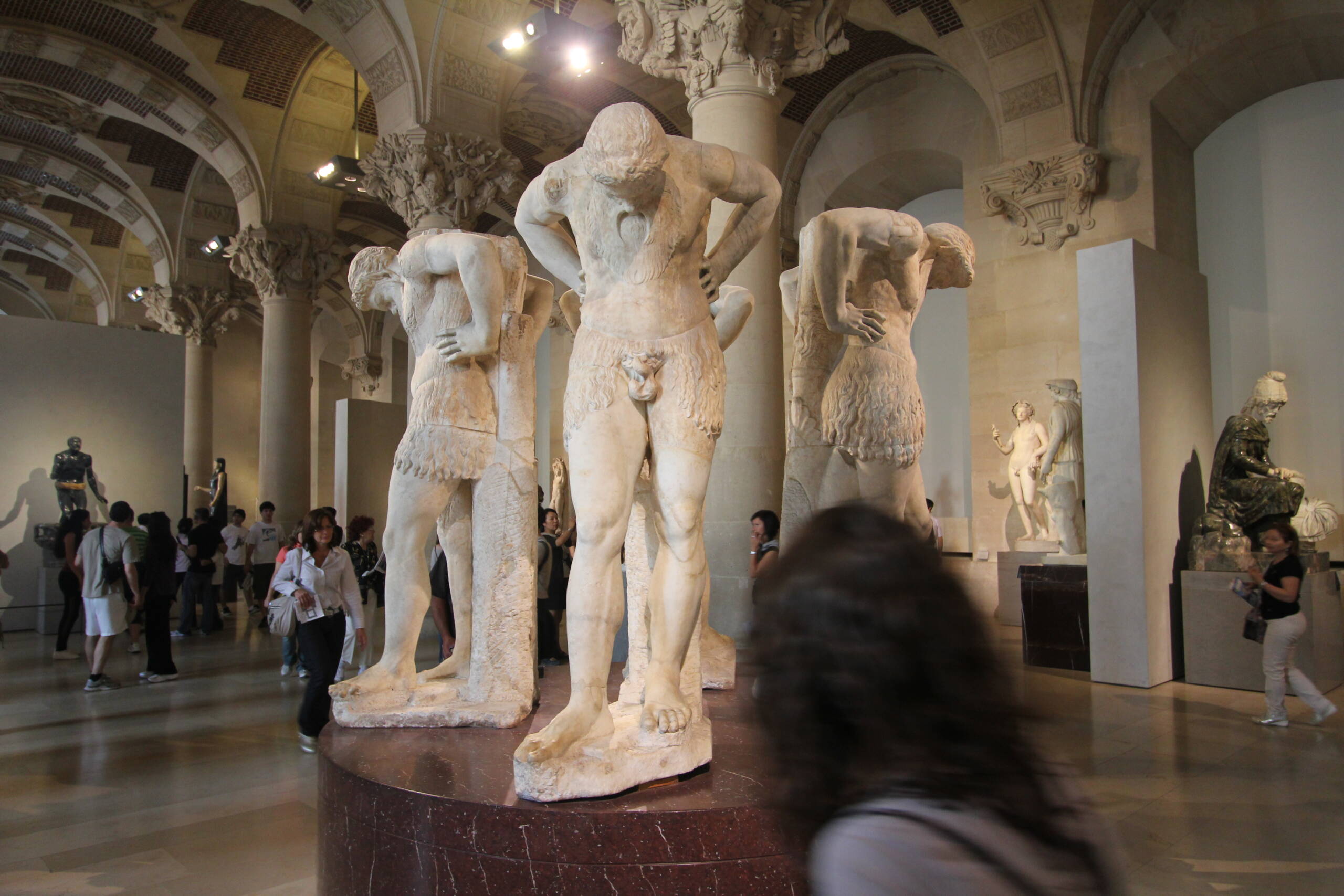Walking into the grand vaulted halls of the Louvre, one feels an almost palpable heaviness in the air, a sensation that goes beyond the visual spectacle of arches, ornate capitals, and carved ceilings. The gallery, with its monumental architecture, frames a group of colossal marble figures that stand silently in the center, their presence radiating a strange mixture of strength and defeat. These are the so-called Barbarians in Captivity, Roman copies of Hellenistic works that immortalize conquered warriors, their vitality trapped forever in the posture of humiliation.

The figures are carved with anatomical precision: broad shoulders, muscular thighs, torsos charged with energy. And yet, that energy is locked into submission. Their arms are drawn back as if bound, their heads hang low, eyes fixed to the ground. They are warriors stripped of freedom, their strength made inert by the invisible chains of empire. The paradox is unsettling—these are not weak men, but men of power who have been rendered powerless. Unlike the serene perfection of classical Greek statuary, these works embody the Hellenistic fascination with pathos, with the human cost of struggle, and with the dignity that endures even in defeat.
In Rome, such sculptures were political instruments, commemorating conquest and encoding hierarchies into cultural memory. To portray the defeated was to inscribe victory into stone. But in the Louvre, their meaning expands, refracted through the museum’s own layered history. Once the palace of French kings, later a revolutionary museum for the people, and still later enriched through Napoleon’s voracious collecting campaigns, the Louvre is itself a monument to power and appropriation. That these bound figures, originally intended to mark Rome’s domination of “barbarian” peoples, now stand here in Paris creates a double irony. They embody not only antiquity’s imperial gaze but also Europe’s later histories of conquest and cultural display.
What makes them endure, however, is not just their political symbolism but their psychological depth. Their downward gaze is not merely the shame of the vanquished; it also suggests reflection, vulnerability, even a kind of tragic introspection. They resist their role as mere trophies. They compel us to see them not as anonymous captives but as individuals who once resisted, who bore the human cost of war. In this sense, the sculptures anticipate modern conceptions of empathy in art, presenting the defeated not only as objects of domination but also as subjects of suffering.
The philosophical resonance is equally profound. These figures embody the tension between freedom and necessity, agency and constraint. Their bodies are carved as though they could spring into life at any moment, yet their posture denies that possibility. They are caught, to borrow Giorgio Agamben’s terms, in a state of bare life—reduced to biological presence without political agency. And yet, by surviving across centuries and occupying a central place in one of the world’s most visited museums, they assert a new kind of agency. They remind us that conquest is never permanent, that the memory of defeat often outlives the glory of the victor.
To stand before them in the Louvre is not simply to admire artistry but to confront history itself. These statues testify to the endurance of memory, to the politics embedded in representation, and to the fact that art is never innocent. The weight they carry is not just marble but the accumulated burden of empire, violence, and remembrance. They are as much mirrors as monuments, reflecting both the Roman past and the European present, reminding us that the defeated are never entirely silenced—so long as stone continues to speak.
Leave a Reply